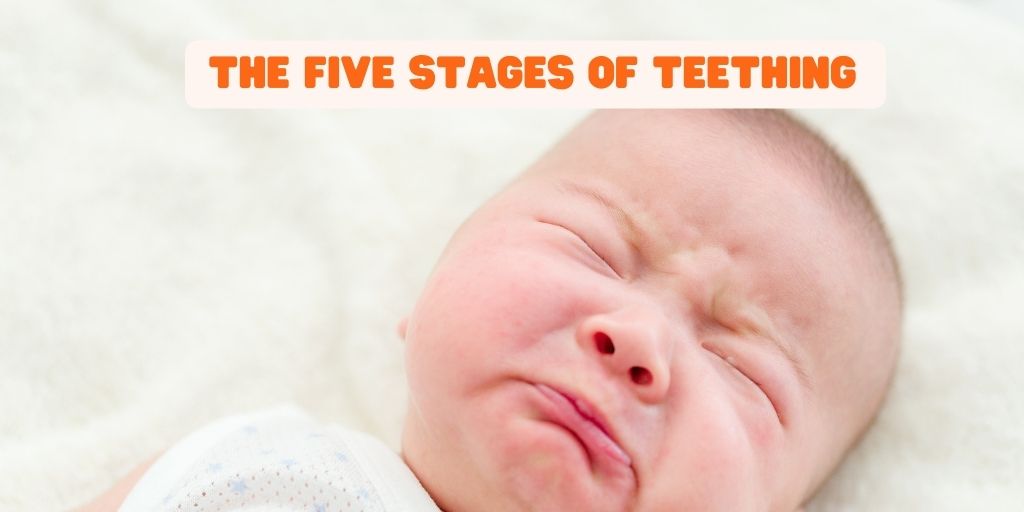The five stages of teething
Teething. It’s a milestone for our babies and we all look forward to that first tiny baby tooth poking through. What we aren’t prepared for is the misery it can cause our precious little baby and the knock-on effect it can have on getting some decent sleep.
Here's the SnoozeShade guide to the five stages of baby teething.
What is teething?
The term 'teething' refers to the process where your baby’s first teeth begin to push up through the gums. As a rule, babies usually start to cut their teeth from around six months and their largest molars appear between 25 and 33 months. Children have 20 teeth, as opposed to adults’ 32.
Stage One: birth to six months
Babies are born with their full set of milk teeth (the first set of teeth before we gain adult teeth at the age of around seven) underneath the gums, and they can start to erupt at any point during this time. Some babies are born with teeth (yes, really!) while others won't get them until much later – all babies are different. During this period, your baby may experience the pain of their teeth moving up through the gums without your being able to see any teeth just yet.
Stage Two: six to 10 months
The second stage of baby teething is when the teeth start to appear, usually from around eight months, making those sleepless nights and restless days a little easier to understand! For some babies, the teeth pop through with few symptoms, while other poor babies have gum pain, a fever, red cheeks and other teething symptoms. After the age of six months, the incisors will start to erupt, usually in this order:

- the two bottom, middle teeth are usually first (lower central incisors)
- followed by the two top middle teeth (upper central incisors)
- followed by a tooth either side of the top two (upper lateral incisors)
- followed by a tooth either side of the bottom two (lower lateral incisors)
By the time your baby is around 12-14 months old, she will have at least four teeth at the top and four at the bottom. Before they emerge, your baby will experience many bouts of teething pain, and sometimes it can seem that the teeth are never going to arrive. It can be frustrating (for you both) but it's normal for teeth to take their time erupting.
How can I help my baby sleep better when teething? See our helpful tips here
Stage three: 10-18 months
The third stage of teething sees the eruption of the primary molar teeth, those needed for chewing. They usually appear in this order:
- The two upper first molars
- Followed by the lower first molars
These teeth can be very painful for babies and you can expect a lot of dribbling, drooling and maybe even an upset tummy too.
Learn how to care for your baby’s new teeth
Stage four: 16-22 months
The fourth stage brings the canine teeth, plus more pain and discomfort. They erupt in this order:
- Two upper canines between the upper incisors and first molars
- The lower canines, between the lower incisors and molars
Despite the crankiness, your baby will now have a wonderfully bright, white smile for you!
Stage five: 25-33 months
The final stage of teething is sometimes the most painful, as it's when the biggest teeth of all erupt, the large molars. Your child is now a toddler and better able to let you know that she's in pain. At this stage, teething can often be mistaken for illness – not surprisingly, as many babies do feel very unwell during teething. You may be surprised to discover new teeth when you check. The last teeth come through in this order:
- Two lower second molars at the very back of the mouth
- Two upper second molars
At the end of this final stage, your baby now has 20 teeth!
Your baby's sleep can be disrupted frequently by the process of teething and you might want to think about investing in a teething ring or teething toy or discussing some teething medication with your pharmacist. There’s also additional help and advice in this feature from the NHS.
Here are some more helpful features:
Your simple guide to baby teething
Tips for a simple and effective baby sleep routine




